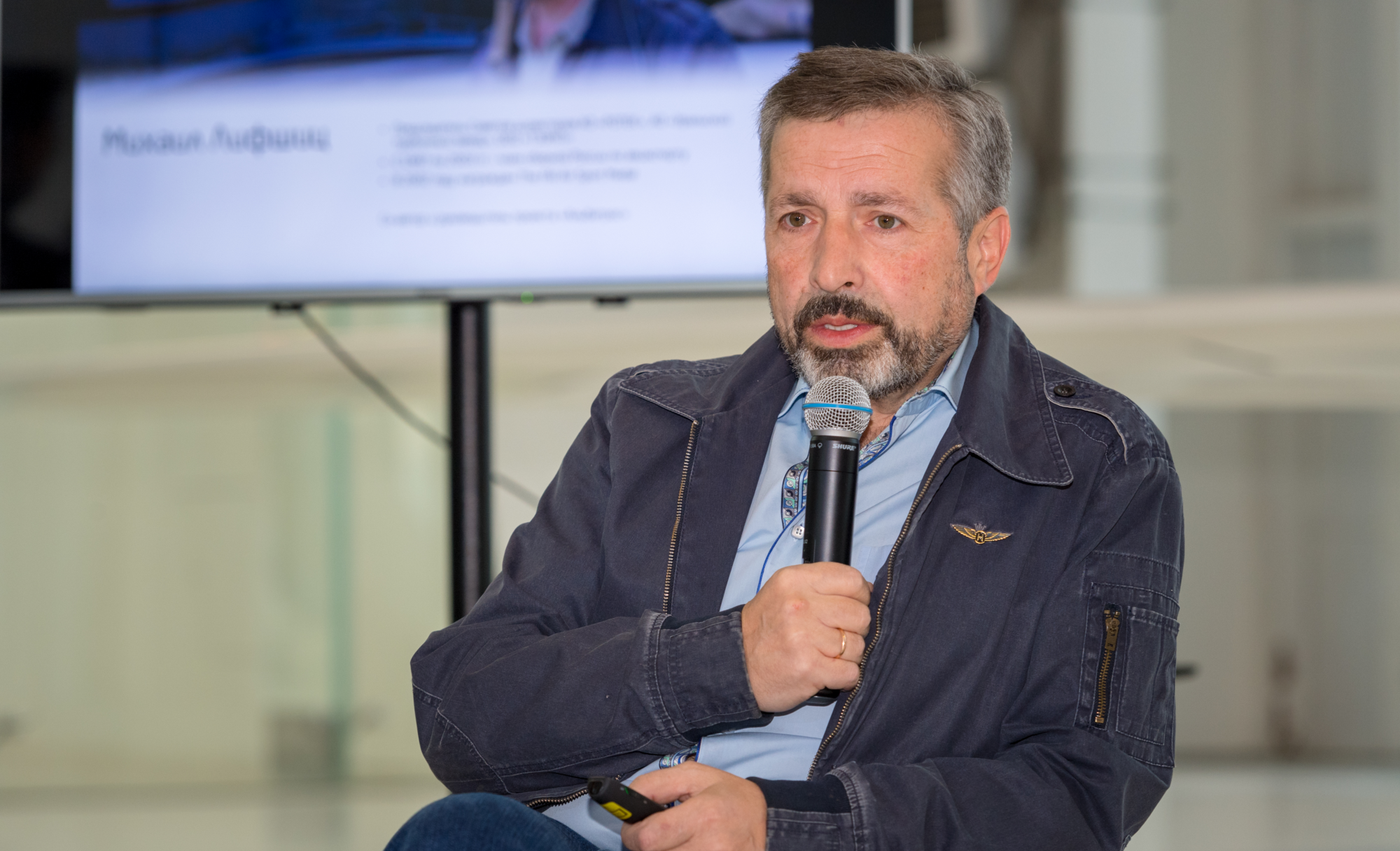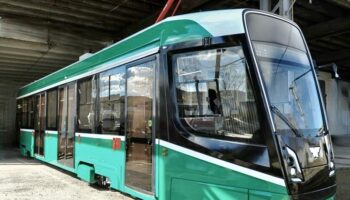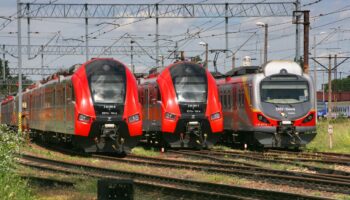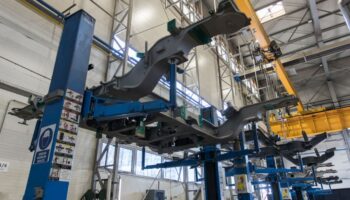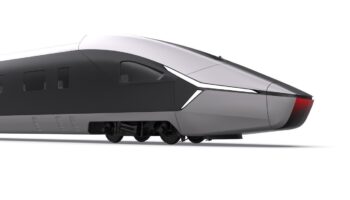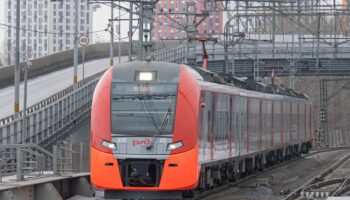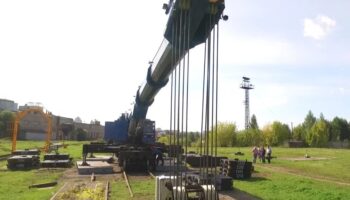Russia: Mikhail Lifshitz, General Designer and Chairman of the ROTEC Board of Directors, presented estimates of the economic effect from the introduction of supercapacitors on the entire fleet of trams operated in the country.
The article was published in the Vedomosti newspaper at the end of December last year. As Mikhail Lifshitz writes, supercapacitors can recover more energy from rolling stock braking than lithium-ion batteries – 40% versus 3-5%. “At the same time, a good “battery” has about 3,000 recharge cycles before losing power, a supercapacitor has more than 1 million”, he notes in the article. The ROTEC top-manager also points to the ability of the supercapacitor to operate at temperatures up to -60 ° C.
The company has already experimented with installing a supercapacitor on a tram in St. Petersburg. Tests showed that the tram produced about 145 kWh of energy per day, or 40% of its consumption. According to Mikhail Lifshitz, the tram fleet in Russia includes 7,700 units, and equipping them with energy storage systems will make it possible to generate approximately 400,000 MWh of electricity per year (at a cost equivalent to more than $29 mln), save 49,000 tons of reference fuel and reduce emissions CO2 per 180 thsd tons. The price for the ROTEC system, which allows to recover energy, use it for tram acceleration or autonomous drive for 1 km is a little less than 1 mln RUR ($13,000 USD), he stated in the commentary on Facebook.
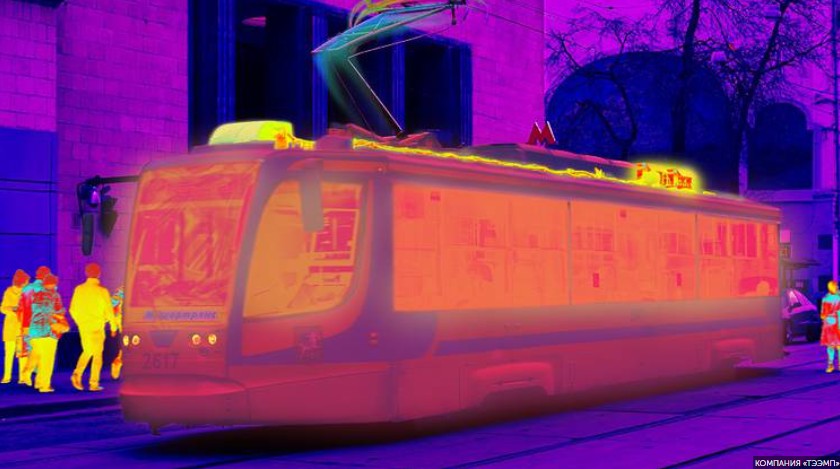 Thermal image of a tram. At the tail section on the roof, the brightest elements are resistors that dissipate energy in the form of heat. Source: TEEMP
Thermal image of a tram. At the tail section on the roof, the brightest elements are resistors that dissipate energy in the form of heat. Source: TEEMP
Developments in the field of supercapacitors have been carried out at ROTEC since 2014. With the use of the created supercapacitors and together with the AVP Technology company an automatic diesel start-stop system was created for TEM18DM diesel locomotives (produced by Transmashholding), which made it possible to increase the energy efficiency of locomotives’ water and oil heating in the cold season. As the head of the production division of TEEMP (part of ROTEC) Sergey Ageev pointed out in his article for the Railway Equipment Journal, the system makes it possible to save up to 300 thsd RUR ($3,800 USD) during one year on fuels and lubricants and payment for emissions into the atmosphere at only one diesel locomotive. About 1,500 diesel locomotives in the Russian Railways (RZD) fleet have already been equipped with such systems, writes Mikhail Lifshitz.
In Russia, trams with supercapacitors are already in use. So, at the beginning of 2021, modernized three-section trams 71-931M Vityaz manufactured by PK Transport Systems and equipped with supercapacitors began to arrive in Moscow. As PK TS declared, supercapacitors can reduce the consumption of electricity for tram traction by up to 30% or within 65 kWh. According to the acceptance documents, one three-section tram with this technology and a number of other new technical solutions cost 106 mln RUR ($1,4 mln USD) incl. VAT in the 1st quarter of 2021.
In 2020, a low-floor seven-section tram with supercapacitors was introduced by CRRC. It has already started operating in the city of Kunming: the manufacturer claims that the installed system makes it possible to use 85% of the braking energy. In general, CRRC has been developing supercapacitors in urban transport since the first half of the 2010s. The Greentech Evodrive light rail solution using supercapacitors is now also offered by CAF.
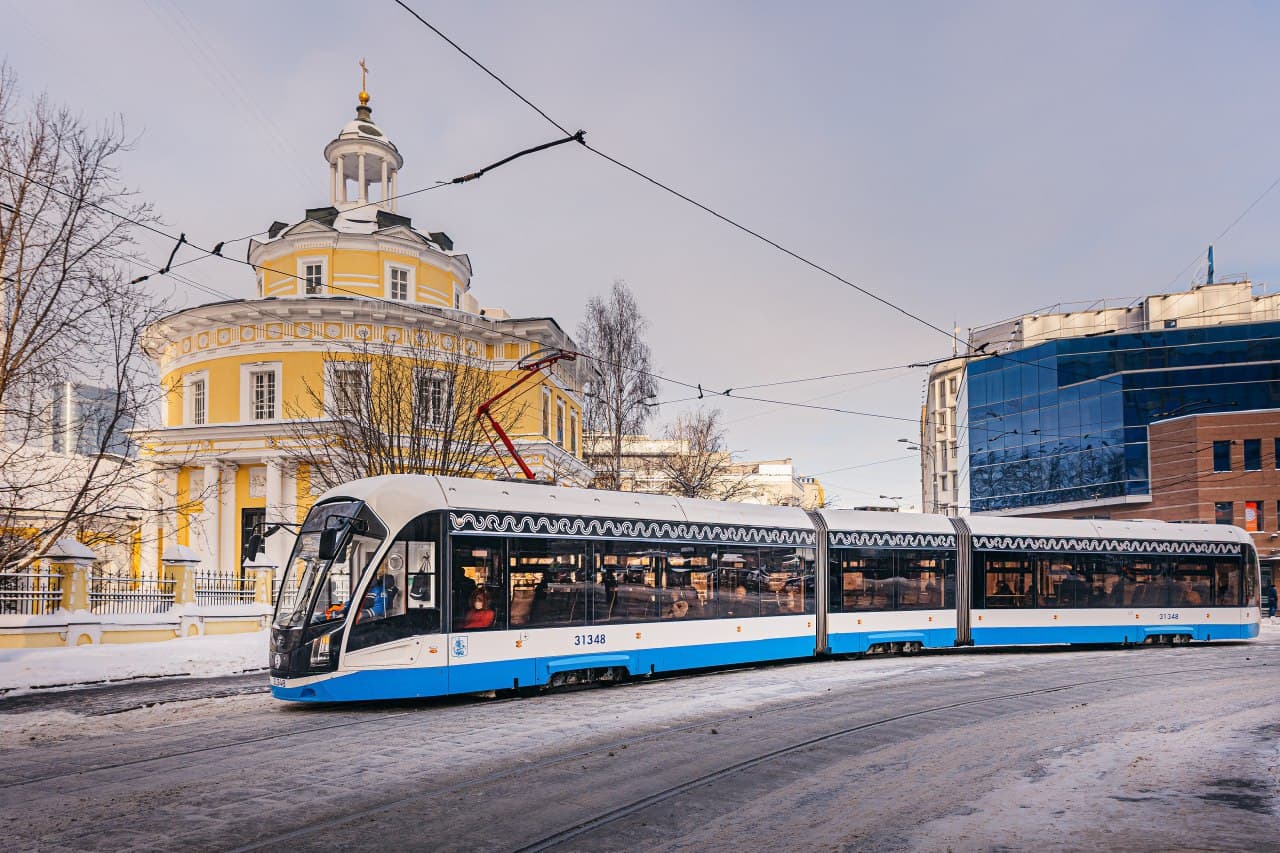 71-931M “Vityaz” tram with supercapacitors on the streets of Moscow, February 2021. Source: PK TS
71-931M “Vityaz” tram with supercapacitors on the streets of Moscow, February 2021. Source: PK TS
Demand for new trams in Russia should be significant in the coming years. At the end of 2021, the Russian Government approved mechanisms that allow the regions of the country to receive loans from the state budget for the integrated development of urban electric transport. As Prime Minister of Russia Mikhail Mishustin pointed out, it is planned to purchase over 1.5 thsd trams with the use of such state support.
In particular, the St. Petersburg operator, Gorelektrotrans, last week published a tender for the supply of 57 low-floor trams in 2022-2023 with an initial price of 6.9 bln RUR ($87 mln USD). According to the tender documentation, tram equipment should be able to connect an energy storage system, and the design should provide a place for its installation. In total, the city plans to purchase 629 trams by 2028.
Also in early 2022, the Russian Government approved applications for infrastructure loans from the Chelyabinsk Region for the metro tram project and the modernization of the tram network for a total of 84.4 bln RUR (over $1 bln USD). According to the approved plans of the region, 5.1 bln RUR ($65 mln USD) are planned to be allocated in 2023-2025 for life cycle contracts for the metro tram fleet and 6.6 bln RUR ($84 mln USD) – for the purchase of low-floor four-axle trams in 2022-2023. In March last year, the authorities of the Chelyabinsk region announced a plan to purchase up to 200 trams in the next 3-4 years.



